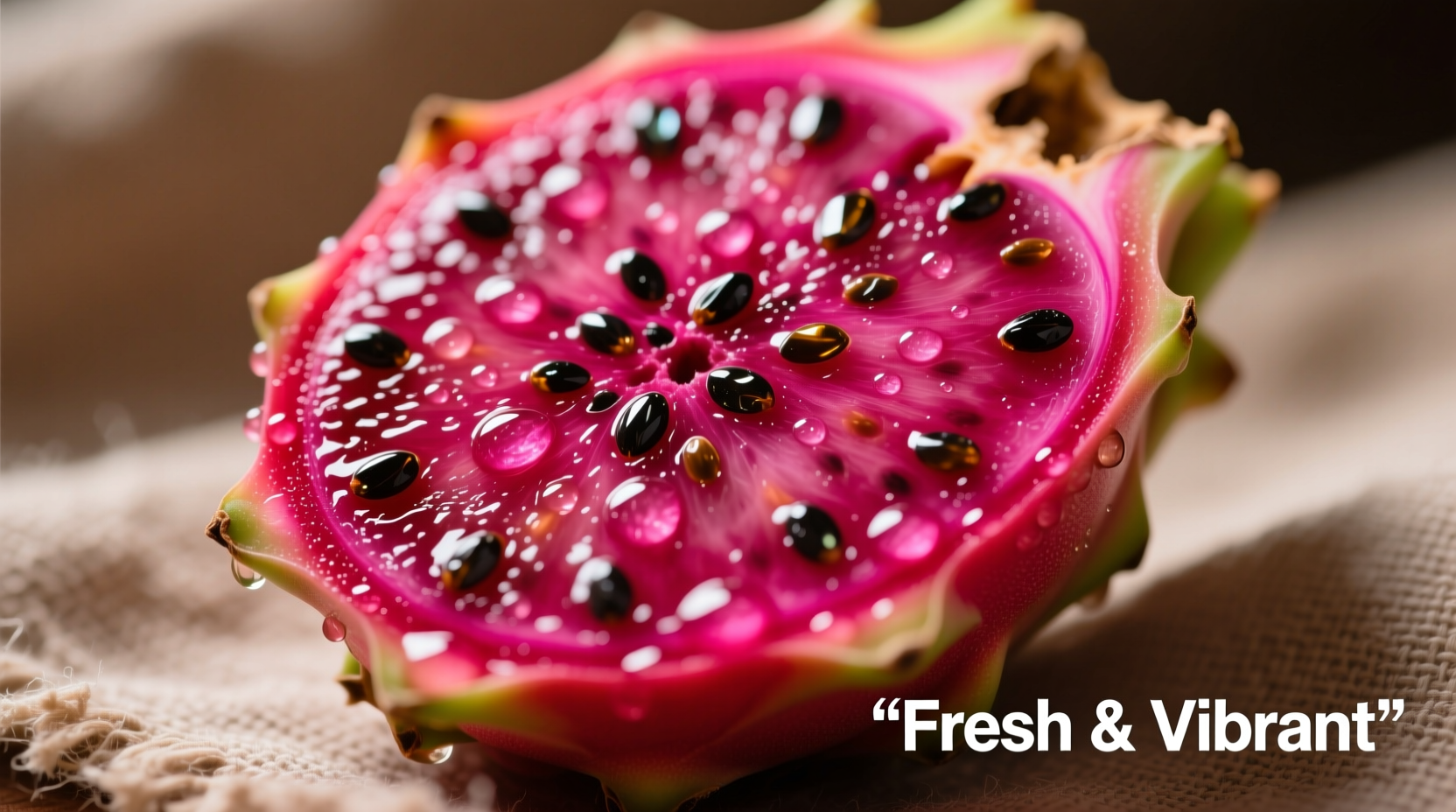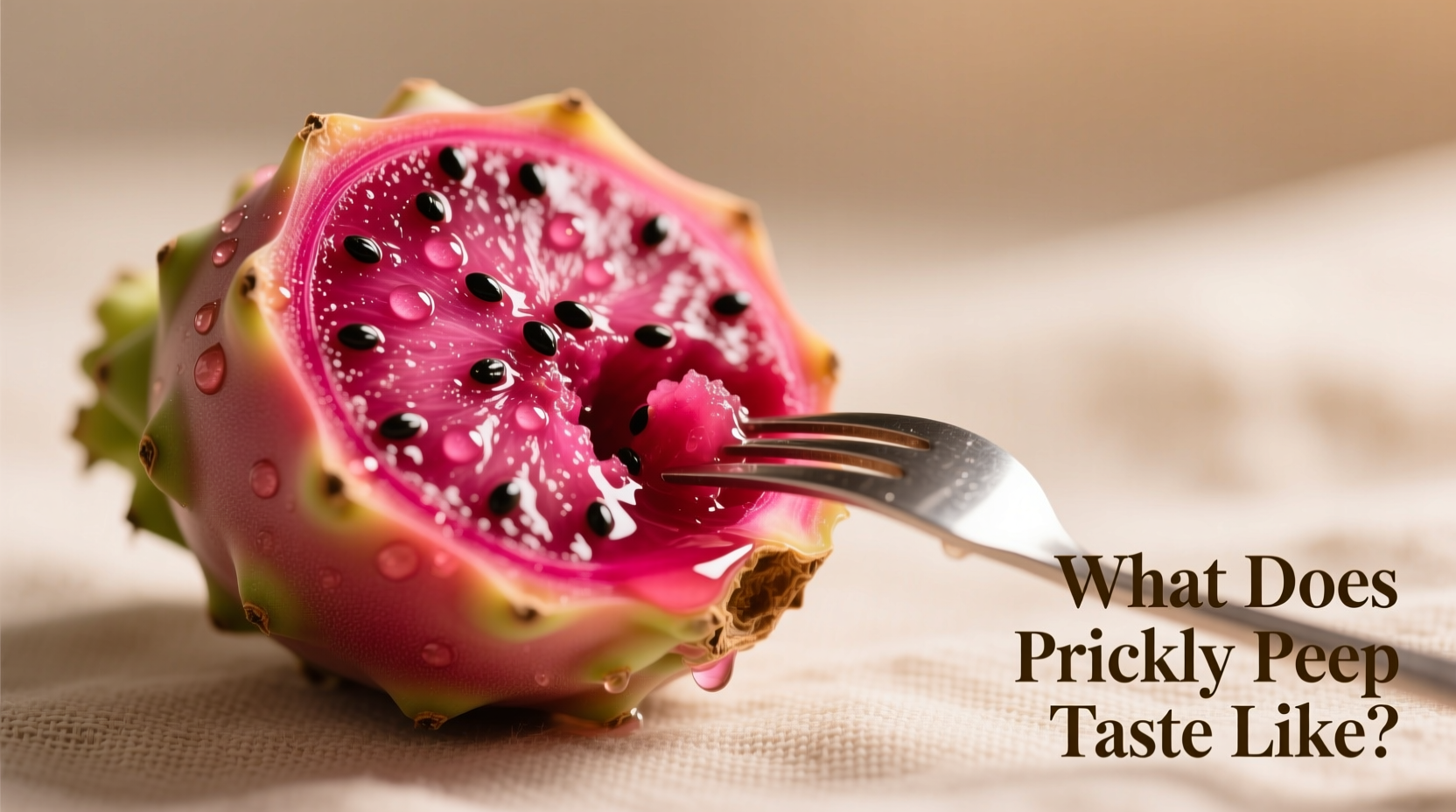Decoding the Unique Flavor of Prickly Pear
When you bite into ripe prickly pear (also called cactus fruit or tuna), you'll experience a complex flavor profile that balances sweetness with bright acidity. The dominant notes resemble watermelon's juicy freshness combined with the floral sweetness of bubblegum and a hint of citrus tang. Underneath these primary flavors lies a subtle earthy undertone that reflects its desert origins.
Texture plays a crucial role in the experience. The flesh is gelatinous and seedy—similar to kiwi but more delicate—with hundreds of small, crunchy edible seeds distributed throughout. This unique combination creates a refreshing, hydrating sensation perfect for warm climates. According to agricultural research from the New Mexico State University Extension, the flavor intensity directly correlates with the fruit's vibrant color: deeper red and purple varieties offer richer sweetness compared to yellow or orange types.
| Fruit Comparison | Flavor Similarity | Key Differences |
|---|---|---|
| Watermelon | High (75%) | Prickly pear has more complex floral notes and earthy undertones |
| Dragon Fruit | Moderate (50%) | Prickly pear is sweeter with stronger citrus notes; dragon fruit is milder |
| Kiwi | Low (30%) | Similar seed texture but prickly pear lacks kiwi's tartness |
This flavor evolution follows a clear ripeness timeline. Unripe green prickly pears taste sour and vegetal—almost like underripe cucumber. As they mature through yellow and orange stages, sweetness develops while acidity decreases. The peak flavor occurs when the fruit turns deep magenta or ruby red, offering optimal sugar-to-acid balance. Overripe fruit becomes mushy with fermented notes, as documented in USDA agricultural studies on Opuntia species.
How Ripeness Changes Your Experience
Your enjoyment of prickly pear depends entirely on selecting properly ripe fruit. This is where most first-timers go wrong—picking unripe specimens that taste unpleasantly sour. The fruit undergoes dramatic flavor transformation:
- Green stage: Bitter, grassy, high acidity (avoid eating)
- Yellow/orange stage: Mild sweetness emerges with noticeable tartness
- Deep red/purple stage: Peak flavor—balanced sweetness, floral notes, minimal acidity
- Overripe stage: Mushy texture with fermented, wine-like qualities
Context matters significantly here. Prickly pear grown in arid climates like Arizona develops more concentrated sugars than those from humid regions, resulting in bolder flavor. The fruit's taste also varies by preparation method—raw consumption highlights its delicate floral notes, while cooking intensifies earthy characteristics. Never eat unripe fruit expecting sweetness; this common mistake creates negative associations with the flavor.
Safe Handling: Avoiding Spines While Preserving Flavor
Before tasting, you must safely remove the fruit's nearly invisible glochids (tiny spines). These barbed hairs cause skin irritation but won't affect flavor once properly removed. Follow this professional chef-tested method:
- Wear thick gloves and use tongs to handle the fruit
- Rub vigorously under cold running water with a soft brush
- Peel skin downward using a knife—the vibrant flesh shouldn't touch spines
- Soak in water for 5 minutes to dislodge any remaining glochids
Improper handling introduces bitterness, as damaged flesh oxidizes quickly. University of Arizona food scientists confirm that oxidation within 10 minutes of cutting reduces the characteristic floral notes by up to 40%. For best results, consume immediately after preparation or add lemon juice to preserve flavor.

Culinary Applications That Highlight Its Best Qualities
Prickly pear shines brightest when used fresh. Its delicate flavor gets overwhelmed in heavily processed dishes. Try these authentic applications:
- Fresh preparation: Dice and add to fruit salads with lime zest—the acidity enhances floral notes
- Beverages: Blend with mint and sparkling water for a refreshing agua fresca (avoid heat to preserve volatile flavor compounds)
- Desserts: Puree strained seeds into sorbet—the natural pectin creates perfect texture
- Savory pairings: Combine with grilled fish or chicken; the fruit's enzymes tenderize proteins
When making juice, use a fine mesh strainer—the seeds contain bitter compounds that leach out during prolonged contact. For optimal flavor extraction, freeze the fruit first; cellular structure breakdown releases more juice with brighter taste, according to culinary research from Mexico's National Institute of Forestry, Agriculture and Livestock Research.
Storage Tips to Maintain Peak Flavor
Prickly pear's flavor degrades rapidly after harvest. To maximize enjoyment:
- Store unpeeled fruit in the refrigerator for up to 3 days (wrap in paper towel to absorb moisture)
- Freeze puree in ice cube trays for long-term use in drinks
- Never store at room temperature—accelerates fermentation
- Use within 24 hours of cutting for best flavor preservation
Commercially processed products like syrups often contain added sugar that masks the fruit's natural complexity. Seek out minimally processed options if fresh fruit isn't available—look for products listing only "prickly pear juice" as the ingredient.











 浙公网安备
33010002000092号
浙公网安备
33010002000092号 浙B2-20120091-4
浙B2-20120091-4